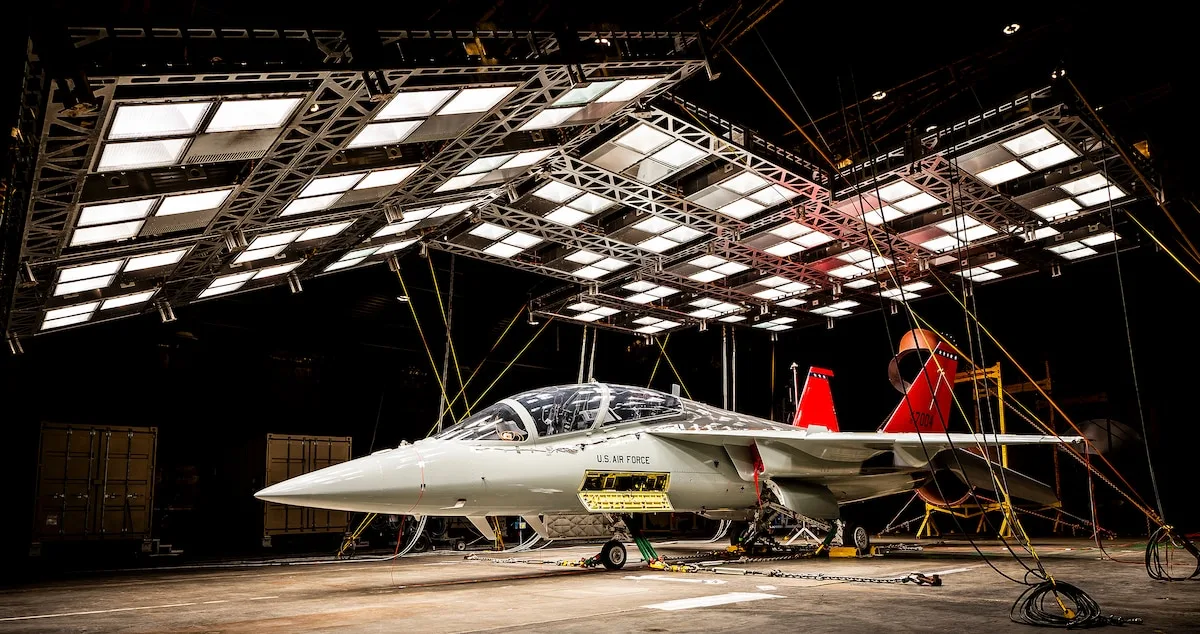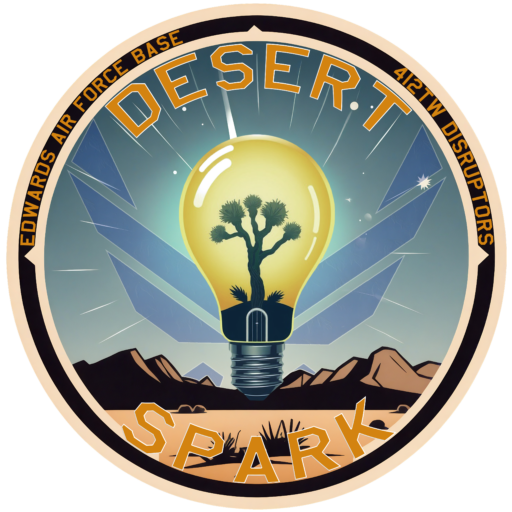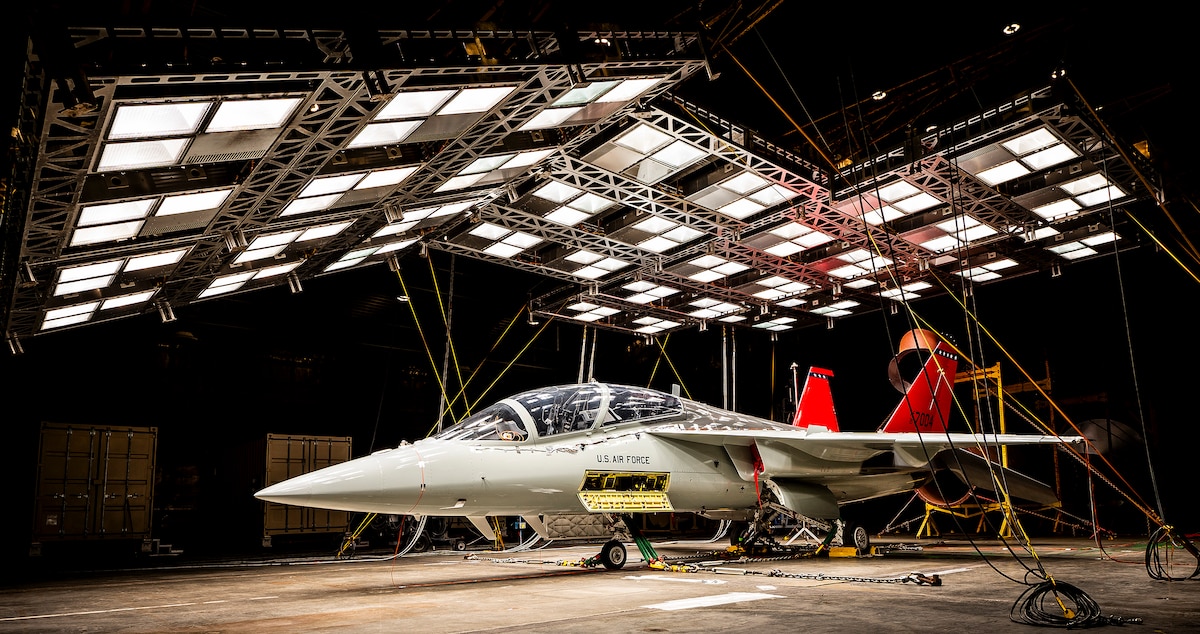Samuel King Jr.
EGLIN AIR FORCE BASE, Fla. – A T-7A Red Hawk, the Air Force’s new trainer aircraft, completed a second round of extreme weather inside the 96th Test Wing’s McKinley Climatic Lab June 17th, 2025.
The Boeing test aircraft endured temperatures ranging from 110 degrees to minus 14 degrees Fahrenheit, cockpit icing as well as 190 mile-per-hour manufactured wind streams. All those weather events were created within the lab’s 55,000 square foot test chamber.
With every new aircraft or piece of equipment, the lab crews accommodate and sometimes find new ways to support the specific requirements that may arise. The T-7 was no different. The maintenance and logistics teams ensured things ran like clockwork, according to Tate.
“The T-7A will replace the T-38C, drastically improving training capability for the next generation of fighter and bomber pilots and will better prepare student pilots to advance into fourth and fifth generation fighter and bomber aircraft,” said Keltos.
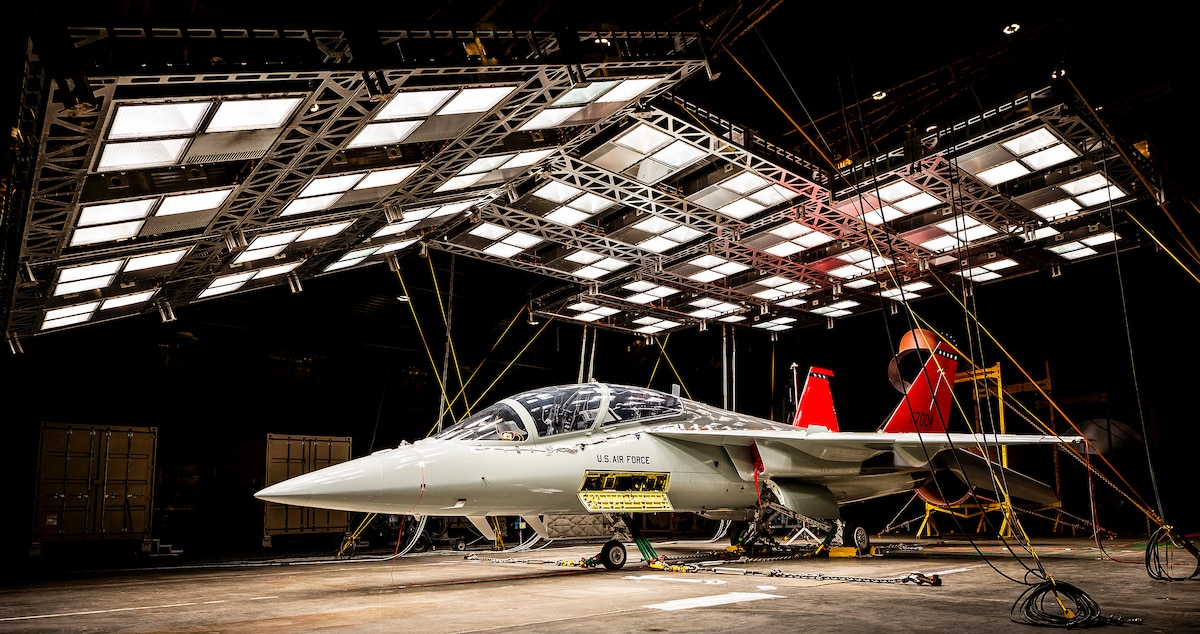 A T-7A Red Hawk sits under bright lights used to create heat in the McKinley Climatic Lab June 16 at Eglin Air Force Base, Florida. The Air Force’s newest training aircraft experienced temperature extremes from 110 to minus 25 degrees Fahrenheit as well as heavy humidity during the month of testing. The tests evaluate how the aircraft, its instrumentation and electronics fared under the extreme conditions it will face in the operational Air Force. (U.S. Air Force photo by Matt Veasley)
A T-7A Red Hawk sits under bright lights used to create heat in the McKinley Climatic Lab June 16 at Eglin Air Force Base, Florida. The Air Force’s newest training aircraft experienced temperature extremes from 110 to minus 25 degrees Fahrenheit as well as heavy humidity during the month of testing. The tests evaluate how the aircraft, its instrumentation and electronics fared under the extreme conditions it will face in the operational Air Force. (U.S. Air Force photo by Matt Veasley) 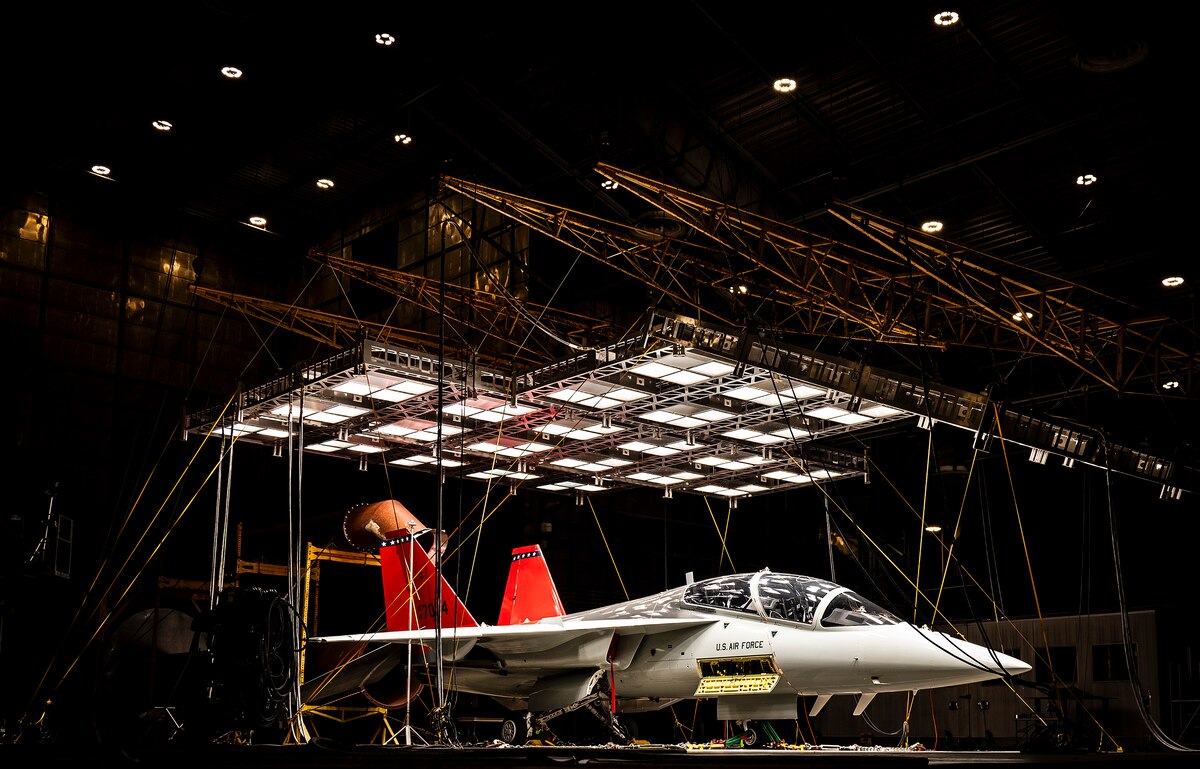 A T-7A Red Hawk sits under bright lights used to create heat in the McKinley Climatic Lab June 16 at Eglin Air Force Base, Florida. The Air Force’s newest training aircraft experienced temperature extremes from 110 to minus 25 degrees Fahrenheit as well as heavy humidity during the month of testing. The tests evaluate how the aircraft, its instrumentation and electronics fared under the extreme conditions it will face in the operational Air Force. (U.S. Air Force photo by Matt Veasley)
A T-7A Red Hawk sits under bright lights used to create heat in the McKinley Climatic Lab June 16 at Eglin Air Force Base, Florida. The Air Force’s newest training aircraft experienced temperature extremes from 110 to minus 25 degrees Fahrenheit as well as heavy humidity during the month of testing. The tests evaluate how the aircraft, its instrumentation and electronics fared under the extreme conditions it will face in the operational Air Force. (U.S. Air Force photo by Matt Veasley) 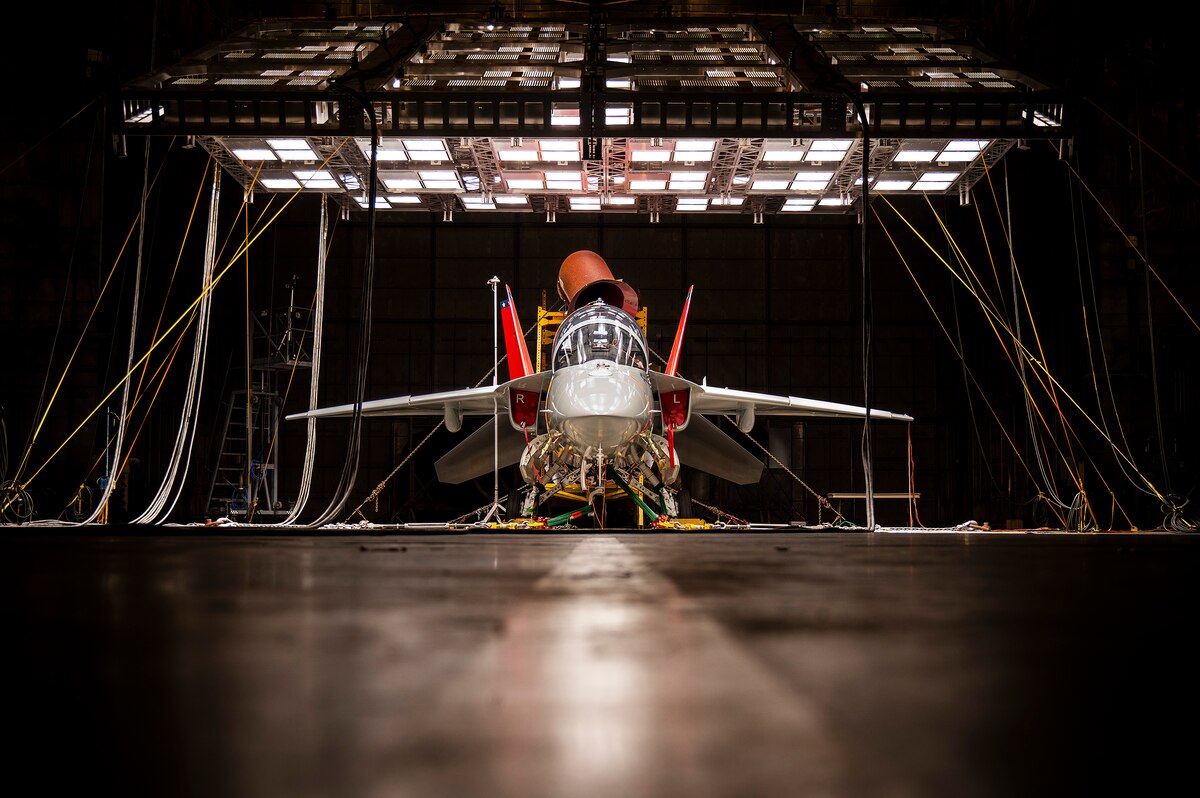 A T-7A Red Hawk sits under bright lights used to create heat in the McKinley Climatic Lab June 16 at Eglin Air Force Base, Florida. The Air Force’s newest training aircraft experienced temperature extremes from 110 to minus 25 degrees Fahrenheit as well as heavy humidity during the month of testing. The tests evaluate how the aircraft, its instrumentation and electronics fared under the extreme conditions it will face in the operational Air Force. (U.S. Air Force photo by Matt Veasley)
A T-7A Red Hawk sits under bright lights used to create heat in the McKinley Climatic Lab June 16 at Eglin Air Force Base, Florida. The Air Force’s newest training aircraft experienced temperature extremes from 110 to minus 25 degrees Fahrenheit as well as heavy humidity during the month of testing. The tests evaluate how the aircraft, its instrumentation and electronics fared under the extreme conditions it will face in the operational Air Force. (U.S. Air Force photo by Matt Veasley) 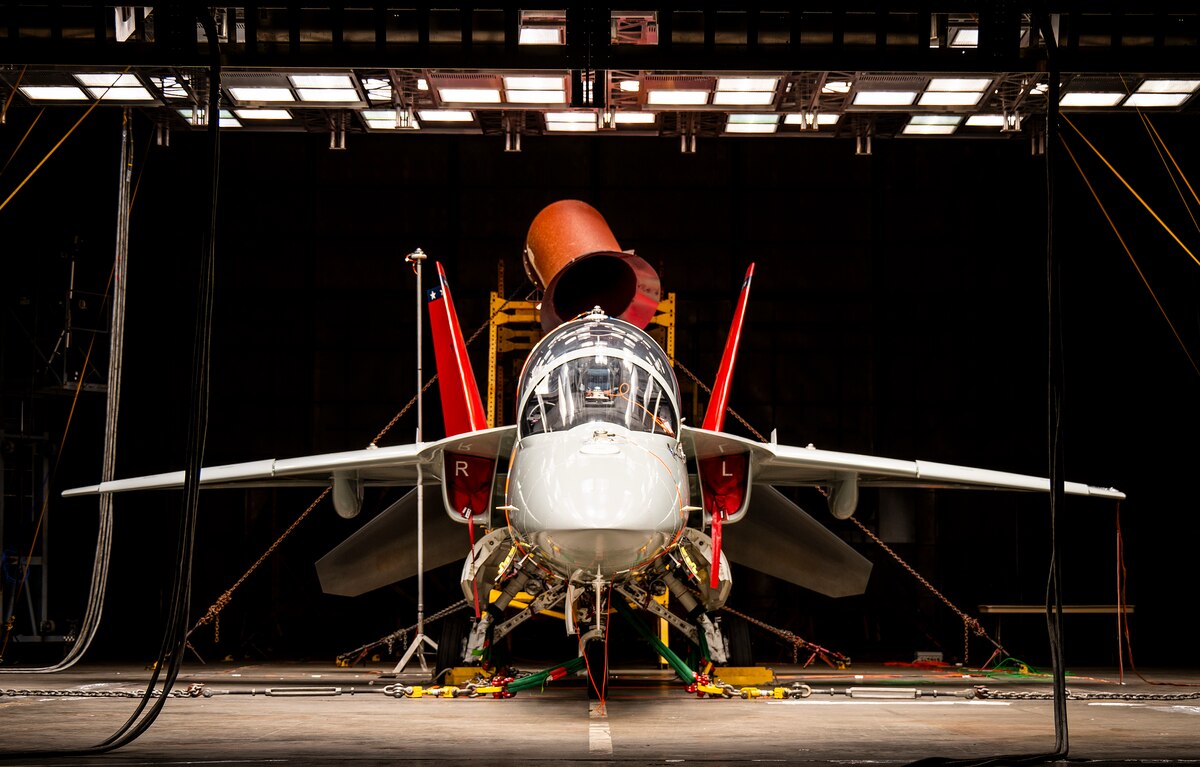 A T-7A Red Hawk sits under bright lights used to create heat in the McKinley Climatic Lab June 16 at Eglin Air Force Base, Florida. The Air Force’s newest training aircraft experienced temperature extremes from 110 to minus 25 degrees Fahrenheit as well as heavy humidity during the month of testing. The tests evaluate how the aircraft, its instrumentation and electronics fared under the extreme conditions it will face in the operational Air Force. (U.S. Air Force photo by Matt Veasley)
A T-7A Red Hawk sits under bright lights used to create heat in the McKinley Climatic Lab June 16 at Eglin Air Force Base, Florida. The Air Force’s newest training aircraft experienced temperature extremes from 110 to minus 25 degrees Fahrenheit as well as heavy humidity during the month of testing. The tests evaluate how the aircraft, its instrumentation and electronics fared under the extreme conditions it will face in the operational Air Force. (U.S. Air Force photo by Matt Veasley) 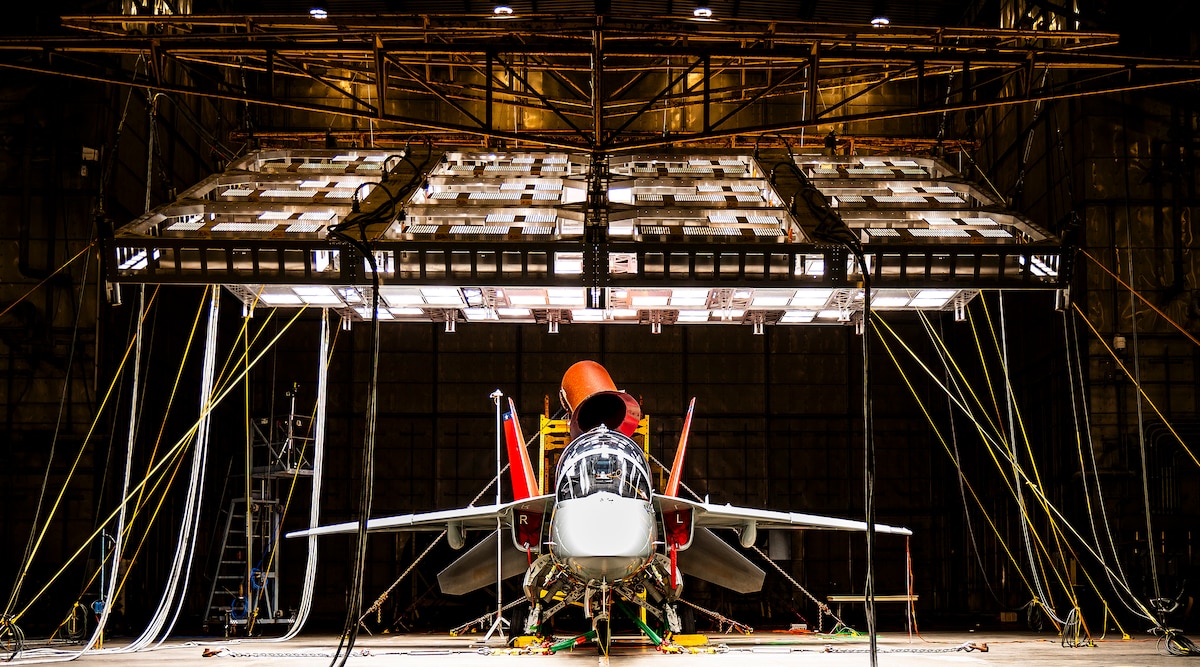 A T-7A Red Hawk sits under bright lights used to create heat in the McKinley Climatic Lab June 16 at Eglin Air Force Base, Florida. The Air Force’s newest training aircraft experienced temperature extremes from 110 to minus 25 degrees Fahrenheit as well as heavy humidity during the month of testing. The tests evaluate how the aircraft, its instrumentation and electronics fared under the extreme conditions it will face in the operational Air Force. (U.S. Air Force photo by Matt Veasley)
A T-7A Red Hawk sits under bright lights used to create heat in the McKinley Climatic Lab June 16 at Eglin Air Force Base, Florida. The Air Force’s newest training aircraft experienced temperature extremes from 110 to minus 25 degrees Fahrenheit as well as heavy humidity during the month of testing. The tests evaluate how the aircraft, its instrumentation and electronics fared under the extreme conditions it will face in the operational Air Force. (U.S. Air Force photo by Matt Veasley) 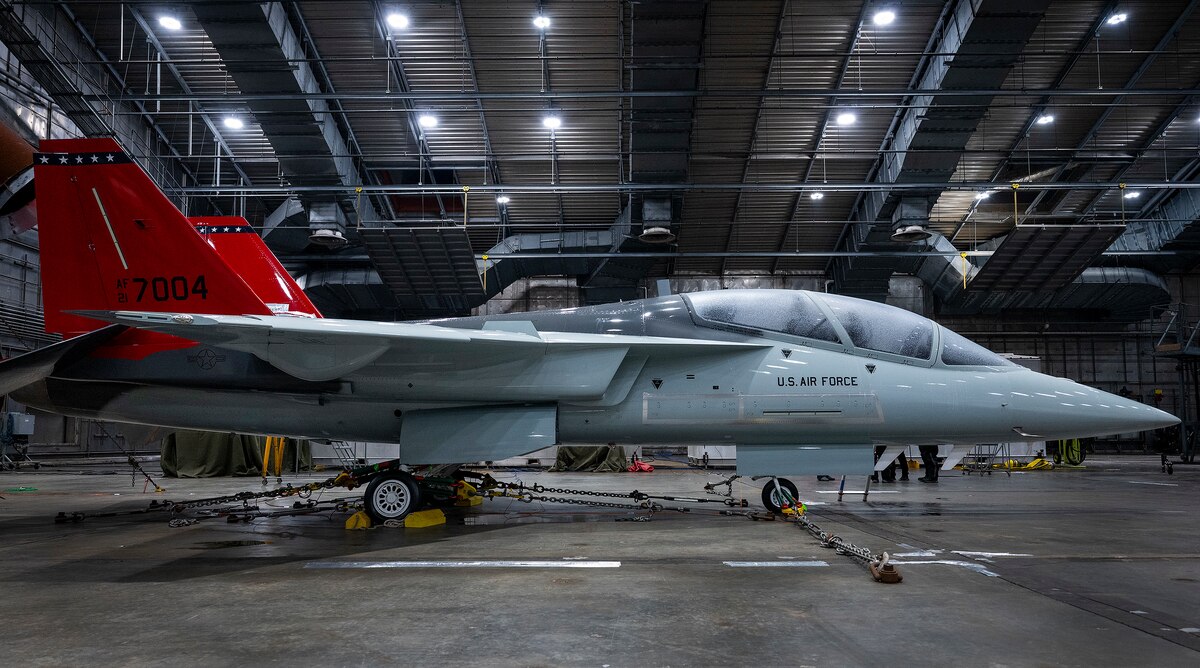 The T-7A Red Hawk endures a cockpit icing test in the McKinley Climatic Lab May 30 at Eglin Air Force Base, Florida. The T-7 underwent another round of cold, heat and wind tests in June facing temperatures of minus 14 to 100 degrees within the lab’s 55,000 square foot hangar. (U.S. Air Force photo by Samuel King Jr.)
The T-7A Red Hawk endures a cockpit icing test in the McKinley Climatic Lab May 30 at Eglin Air Force Base, Florida. The T-7 underwent another round of cold, heat and wind tests in June facing temperatures of minus 14 to 100 degrees within the lab’s 55,000 square foot hangar. (U.S. Air Force photo by Samuel King Jr.) 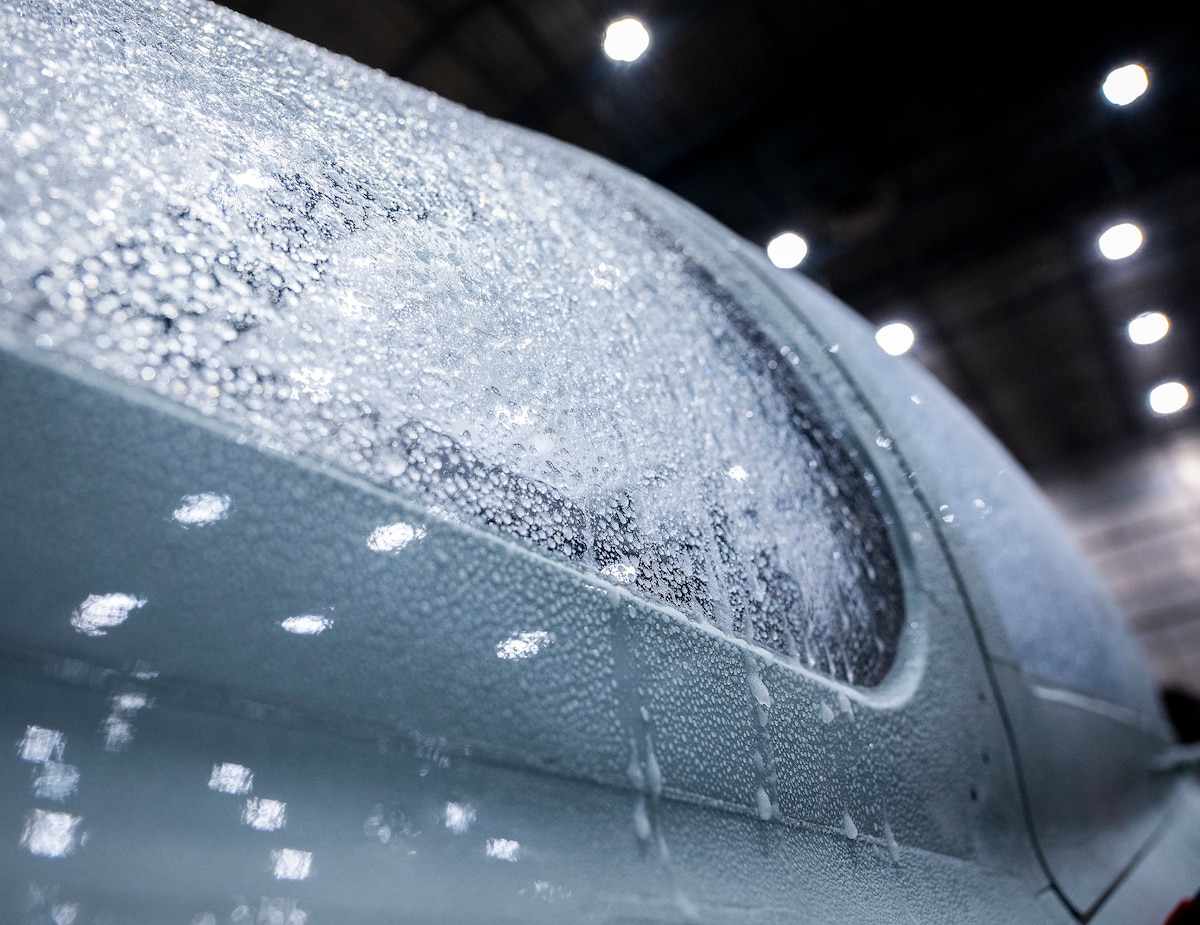 The T-7A Red Hawk endures a cockpit icing test in the McKinley Climatic Lab May 30 at Eglin Air Force Base, Florida. The T-7 underwent another round of cold, heat and wind tests in June facing temperatures of minus 14 to 100 degrees within the lab’s 55,000 square foot hangar. (U.S. Air Force photo by Samuel King Jr.)
The T-7A Red Hawk endures a cockpit icing test in the McKinley Climatic Lab May 30 at Eglin Air Force Base, Florida. The T-7 underwent another round of cold, heat and wind tests in June facing temperatures of minus 14 to 100 degrees within the lab’s 55,000 square foot hangar. (U.S. Air Force photo by Samuel King Jr.) 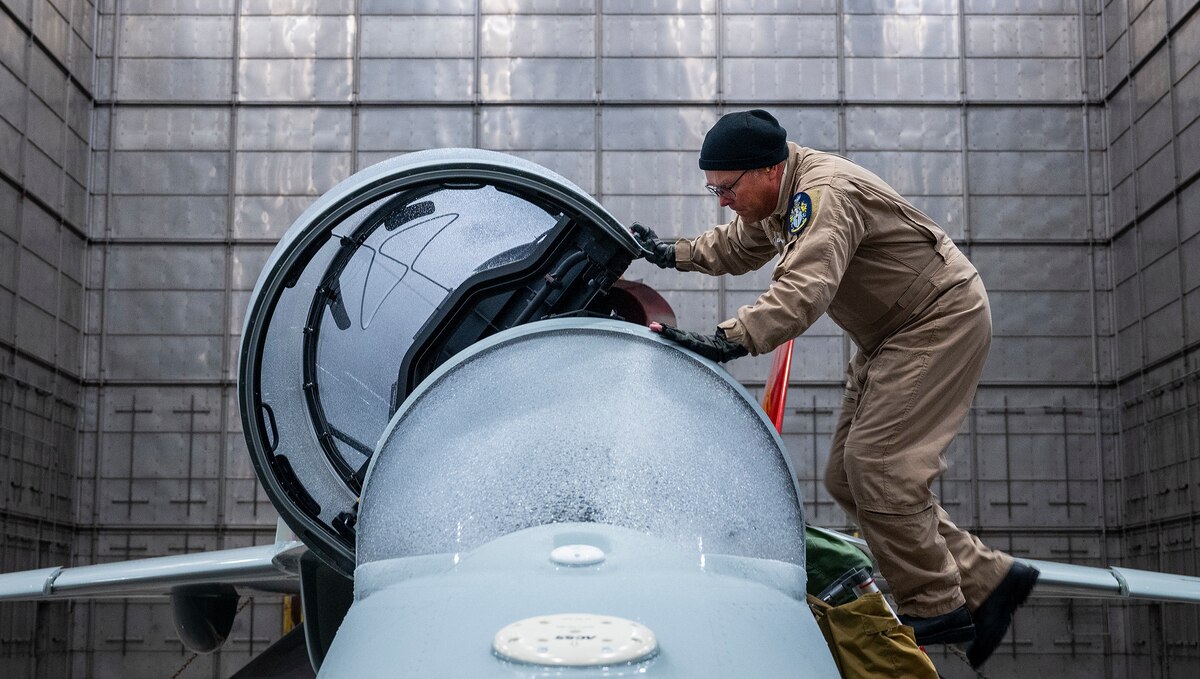 Boeing pilot, Evan Thomas, opens up a T-7A Red Hawk’s frozen canopy during an icing test in the McKinley Climatic Lab May 30 at Eglin Air Force Base, Florida. The T-7 underwent another round of cold, heat and wind tests in June facing temperatures of minus 14 to 100 degrees within the lab’s 55,000 square foot hangar. (U.S. Air Force photo by Samuel King Jr.)
Boeing pilot, Evan Thomas, opens up a T-7A Red Hawk’s frozen canopy during an icing test in the McKinley Climatic Lab May 30 at Eglin Air Force Base, Florida. The T-7 underwent another round of cold, heat and wind tests in June facing temperatures of minus 14 to 100 degrees within the lab’s 55,000 square foot hangar. (U.S. Air Force photo by Samuel King Jr.) 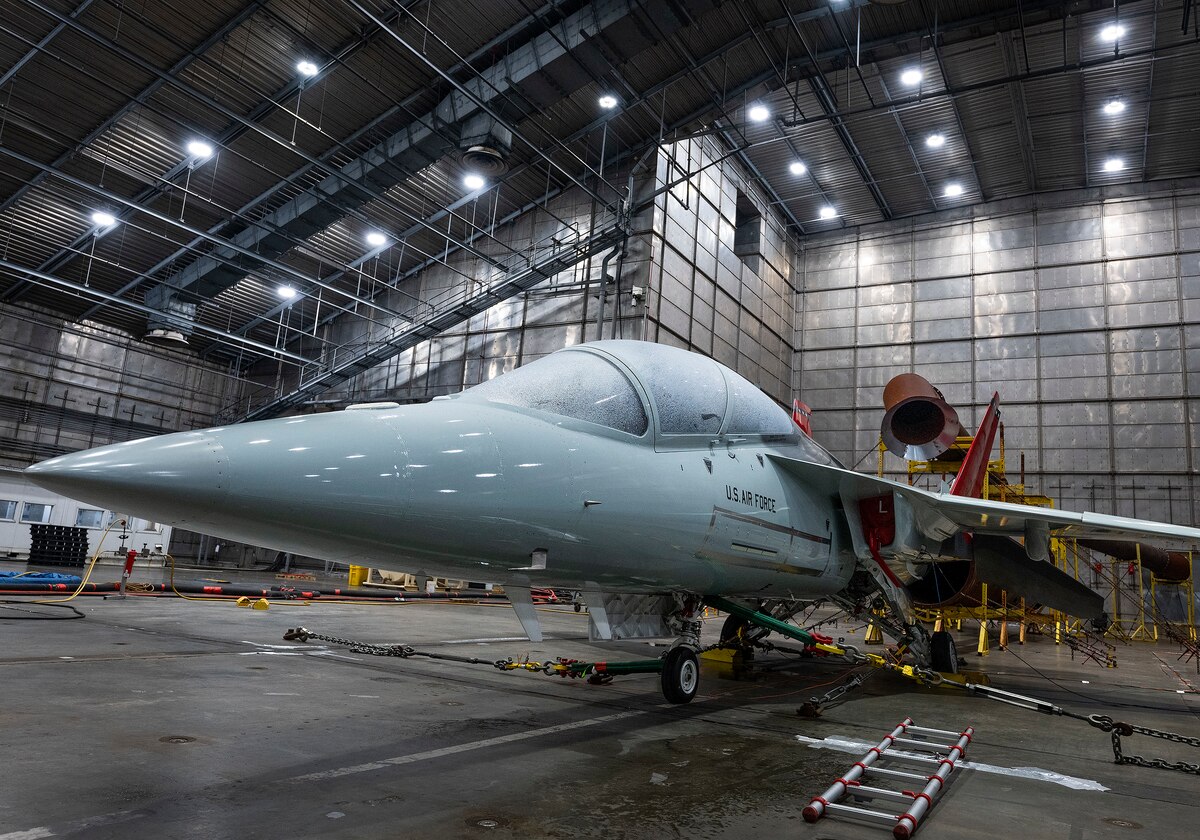 The T-7A Red Hawk endures a cockpit icing test in the McKinley Climatic Lab May 30 at Eglin Air Force Base, Florida. The T-7 underwent another round of cold, heat and wind tests in June facing temperatures of minus 14 to 100 degrees within the lab’s 55,000 square foot hangar. (U.S. Air Force photo by Samuel King Jr.)
The T-7A Red Hawk endures a cockpit icing test in the McKinley Climatic Lab May 30 at Eglin Air Force Base, Florida. The T-7 underwent another round of cold, heat and wind tests in June facing temperatures of minus 14 to 100 degrees within the lab’s 55,000 square foot hangar. (U.S. Air Force photo by Samuel King Jr.) 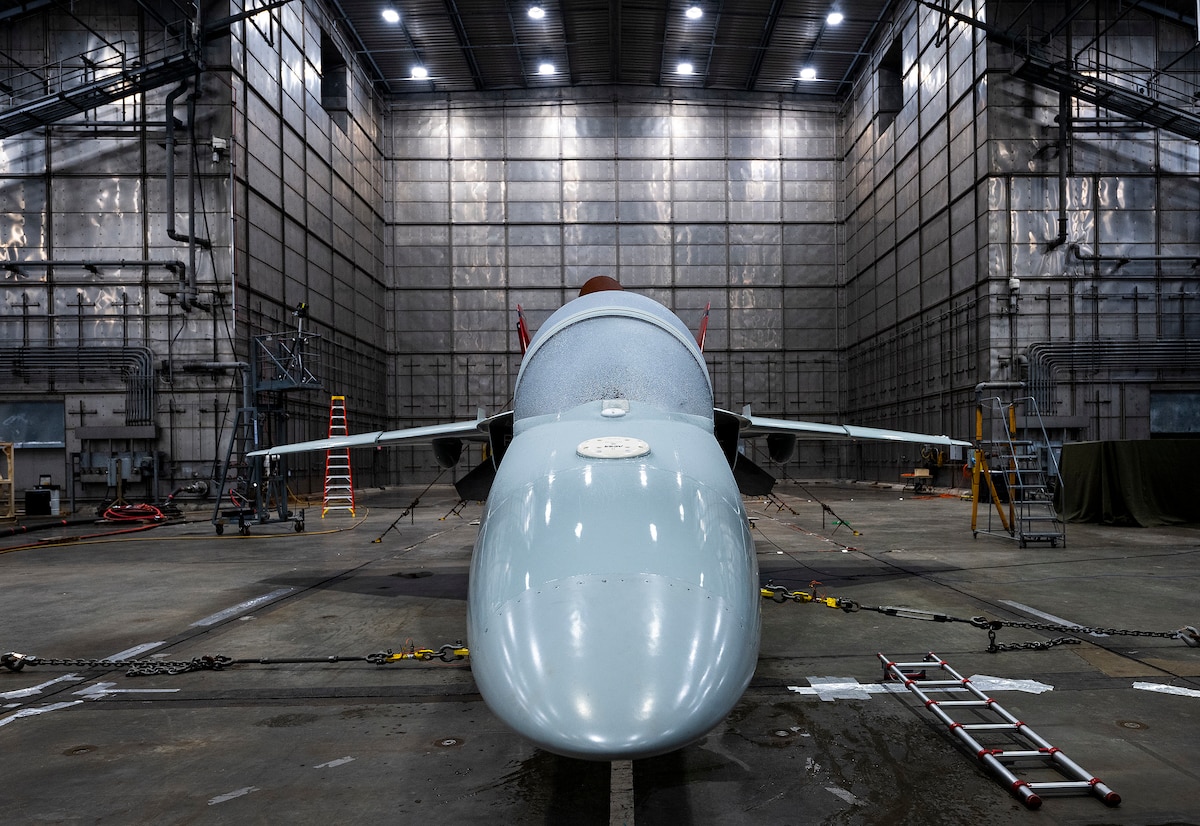 The T-7A Red Hawk endures a cockpit icing test in the McKinley Climatic Lab May 30 at Eglin Air Force Base, Florida. The T-7 underwent another round of cold, heat and wind tests in June facing temperatures of minus 14 to 100 degrees within the lab’s 55,000 square foot hangar. (U.S. Air Force photo by Samuel King Jr.)
The T-7A Red Hawk endures a cockpit icing test in the McKinley Climatic Lab May 30 at Eglin Air Force Base, Florida. The T-7 underwent another round of cold, heat and wind tests in June facing temperatures of minus 14 to 100 degrees within the lab’s 55,000 square foot hangar. (U.S. Air Force photo by Samuel King Jr.) 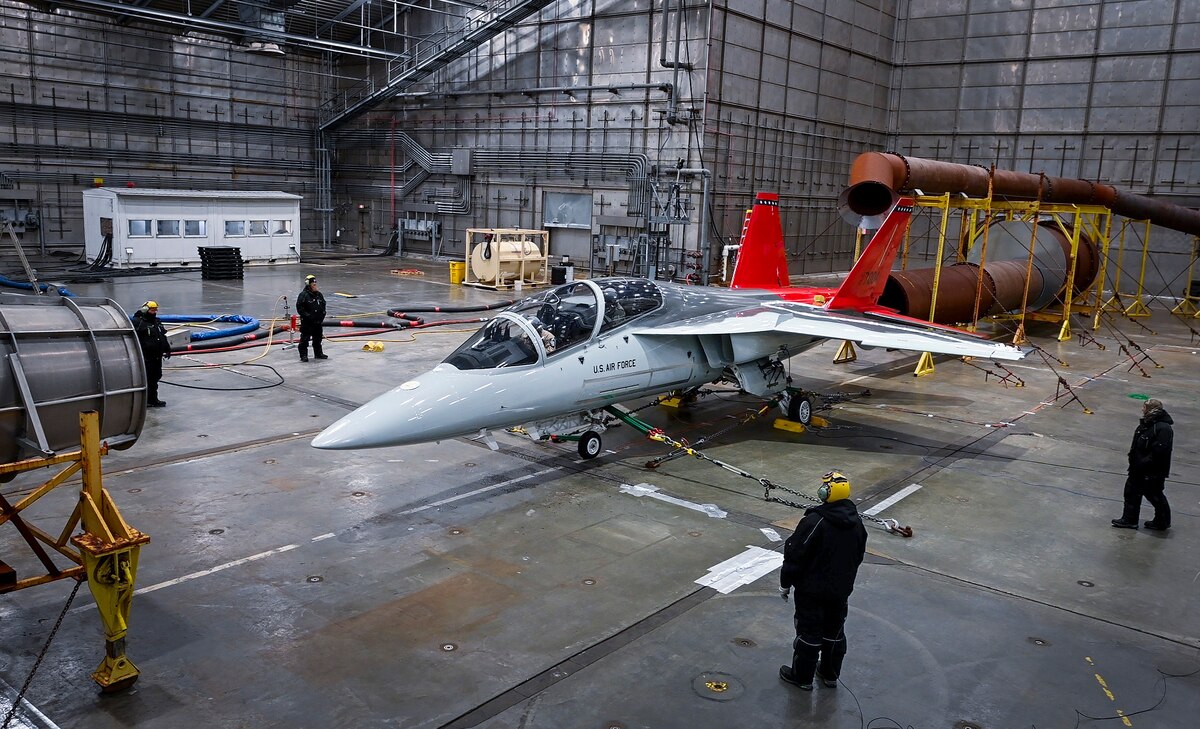 The T-7A Red Hawk maintenance team prepares the aircraft for a high wind cloud test in the McKinley Climatic Lab May 30 at Eglin Air Force Base, Florida. The T-7 underwent another round of cold, heat and wind tests in June facing temperatures of minus 14 to 100 degrees within the lab’s 55,000 square foot hangar. (U.S. Air Force photo by Matt Veasley)
The T-7A Red Hawk maintenance team prepares the aircraft for a high wind cloud test in the McKinley Climatic Lab May 30 at Eglin Air Force Base, Florida. The T-7 underwent another round of cold, heat and wind tests in June facing temperatures of minus 14 to 100 degrees within the lab’s 55,000 square foot hangar. (U.S. Air Force photo by Matt Veasley) 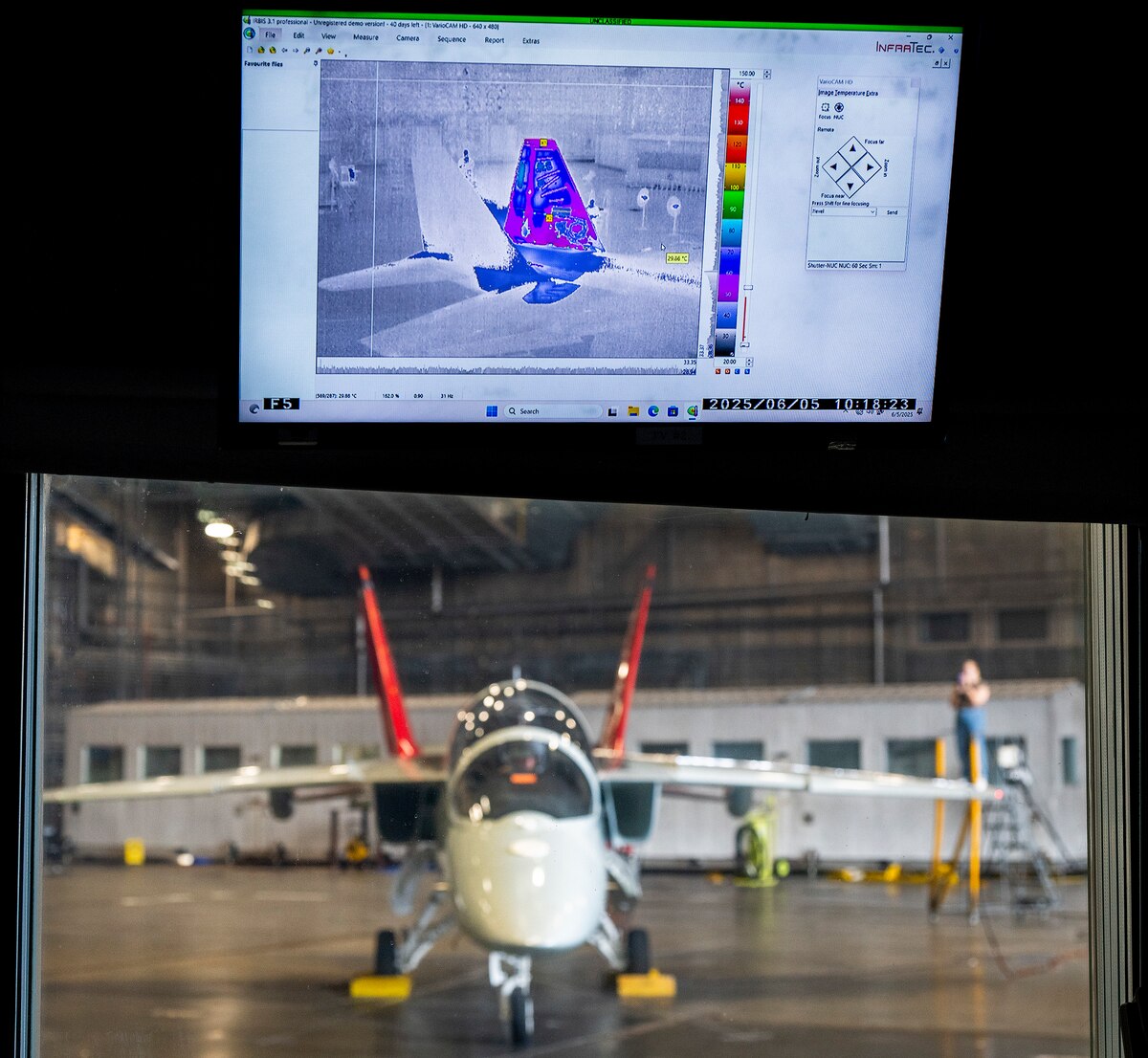 The temperature rises on the T-7A Red Hawk’s tail fin during crosswind testing in the McKinley Climatic Lab June 5 at Eglin Air Force Base, Florida. The T-7 underwent another round of cold, heat and wind tests in June facing temperatures of minus 14 to 100 degrees within the lab’s 55,000 square foot hangar. (U.S. Air Force photo by Samuel King Jr.)
The temperature rises on the T-7A Red Hawk’s tail fin during crosswind testing in the McKinley Climatic Lab June 5 at Eglin Air Force Base, Florida. The T-7 underwent another round of cold, heat and wind tests in June facing temperatures of minus 14 to 100 degrees within the lab’s 55,000 square foot hangar. (U.S. Air Force photo by Samuel King Jr.) 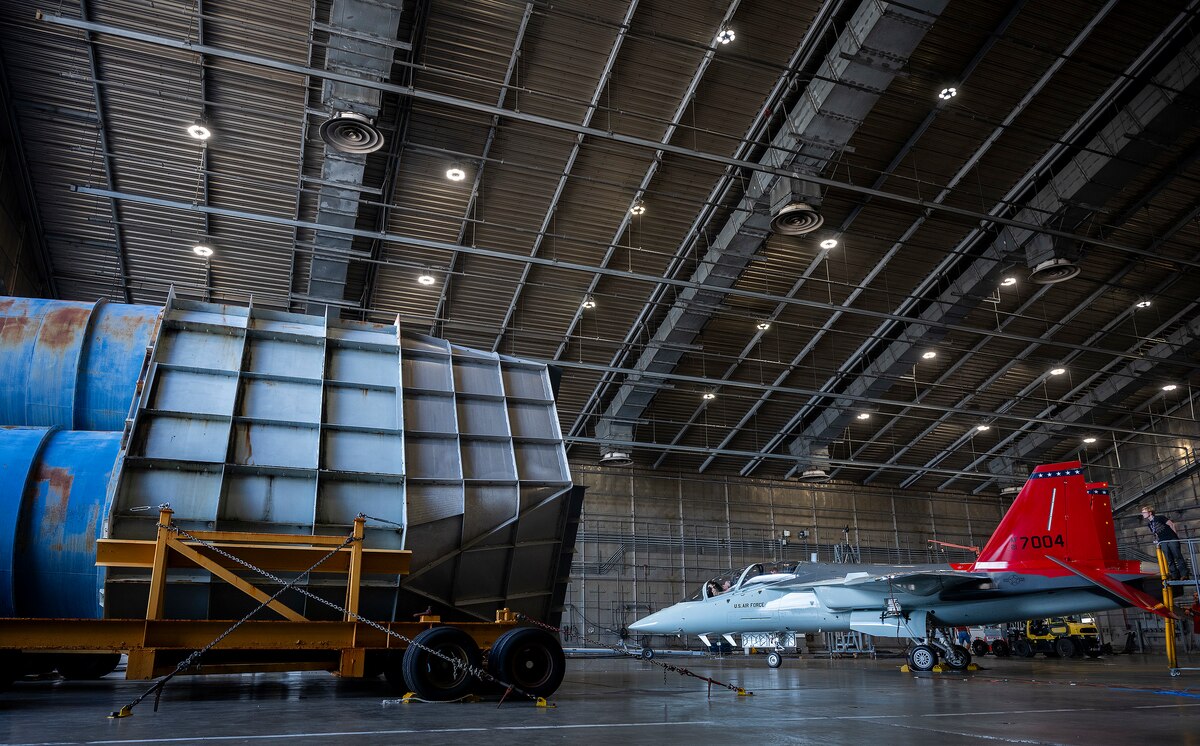 The T-7A Red Hawk sits ready to begin a crosswind test in the McKinley Climatic Lab June 5 at Eglin Air Force Base, Florida. The T-7 underwent another round of cold, heat and wind tests in June facing temperatures of minus 14 to 100 degrees within the lab’s 55,000 square foot hangar. (U.S. Air Force photo by Samuel King Jr.)
The T-7A Red Hawk sits ready to begin a crosswind test in the McKinley Climatic Lab June 5 at Eglin Air Force Base, Florida. The T-7 underwent another round of cold, heat and wind tests in June facing temperatures of minus 14 to 100 degrees within the lab’s 55,000 square foot hangar. (U.S. Air Force photo by Samuel King Jr.)













